Sourdough date nut bread is a perfect combination of tangy sourdough flavor with the natural sweetness of dates and the crunch of nuts. This bread has a crispy, golden crust and a chewy, moist inside, making it a perfect treat for breakfast or a snack. Whether you’re new to sourdough baking or a seasoned baker, this recipe will guide you through every step to ensure you end up with a delicious, satisfying loaf.
What is Sourdough Date Nut Bread?
Sourdough date nut bread is a delightful fusion of traditional date nut bread with the complex flavors that come from using a sourdough starter. The tang from the natural fermentation process of the sourdough pairs beautifully with the sweet and chewy dates and the crunchy texture of nuts like walnuts or pecans.
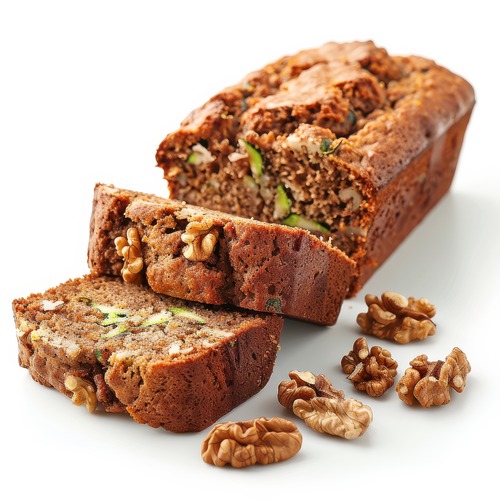
A Tradition with a Twist
Date nut bread has been around for decades, typically baked in homes for its rich, comforting taste. It’s often enjoyed with butter or a slice of cheese, making it perfect for breakfast or an afternoon snack. The introduction of sourdough adds a unique twist, not only enhancing the flavor but also giving the bread a more rustic, artisanal feel.
How Sourdough Elevates the Flavor
Sourdough bread is known for its tangy flavor, created by the fermentation process of the sourdough starter. This fermentation process breaks down the starches in the flour, allowing the complex flavors to develop over time. When paired with the sweet notes from the dates and the rich taste of toasted nuts, the sourdough creates a well-balanced, flavorful bread.
Nutritional Benefits
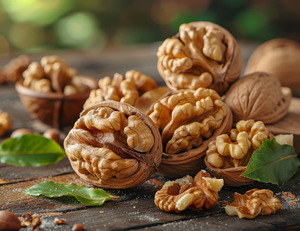
This bread isn’t just delicious—it’s also nutritious! Dates are a great source of natural sugars, fiber, and antioxidants, while nuts like walnuts are rich in healthy fats and protein. Sourdough itself is known for being easier to digest compared to regular bread, thanks to the fermentation process, which helps break down gluten and make the nutrients more available to your body.
Ingredients and Equipment You’ll Need
To make the perfect sourdough date nut bread, you’ll need just a few key ingredients and some basic kitchen equipment. Here’s what you’ll need to get started:

Core Ingredients
- Flour: Bread flour works best, but all-purpose flour is also suitable.
- Sourdough starter: A healthy, active starter is crucial for achieving the best results.
- Dates: Use pitted and chopped dates for natural sweetness.
- Nuts: Walnuts or pecans are great options for adding a crunchy texture.
- Water: Essential for hydrating the dough and achieving the right consistency.
- Salt: Helps enhance the flavors.
- Optional sweetener: A small amount of honey or sugar can be added for extra sweetness if desired.
Optional Add-ins
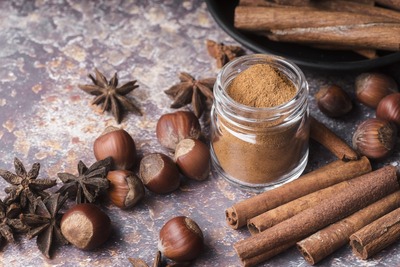
Want to personalize your bread? Here are a few add-ins you can consider:
- Spices: A touch of cinnamon or nutmeg can add warmth to your loaf.
- Dried fruits: Dried cranberries or apricots can provide additional bursts of sweetness.
- Honey: For an extra touch of natural sweetness, you can use honey in place of sugar.
Essential Equipment
- Mixing bowls: For combining the ingredients and letting the dough rise.
- Proofing basket: Helps shape the dough and supports the second rise.
- Oven: A well-preheated oven ensures a good crust.
- Dutch oven (optional): If you have one, baking in a Dutch oven helps create steam, leading to a crispier crust.
- Bench scraper: Useful for handling and shaping the dough.
How to Make Sourdough Date Nut Bread
Now, let’s get into the step-by-step process for making sourdough date nut bread.
Preparing the Sourdough Starter
Before you begin, you need an active, bubbly sourdough starter. Here’s how to ensure your starter is ready:
- Feed your starter: A few hours before baking, feed your sourdough starter with equal parts flour and water. Allow it to double in size.
- Float test: To check if the starter is ready, drop a small amount of it into water. If it floats, your starter is active and ready to use.
Preparing the Dates and Nuts
The dates and nuts are key to the texture and flavor of your bread:
- Soak the dates: To soften the dates, soak them in warm water for 10-15 minutes, then drain them. This will make them easier to incorporate into the dough and prevent them from drying out during baking.
- Toast the nuts: Lightly toasting the nuts in a dry skillet enhances their flavor and adds a slight crunch to the finished bread.
Mixing and Kneading the Dough
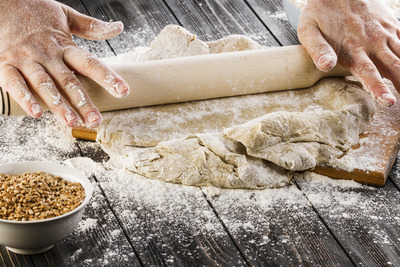
With your ingredients ready, it’s time to mix and knead the dough:
- Combine ingredients: In a large bowl, mix your sourdough starter, water, flour, and salt until it forms a shaggy dough.
- Add dates and nuts: Gently fold in the soaked dates and toasted nuts.
- Knead the dough: Knead the dough by hand for about 10 minutes, or use a stand mixer on low speed. The dough should become smooth and elastic.
First Rise: Bulk Fermentation
Bulk fermentation is where the dough develops its flavor and structure:
- Let the dough rise: Cover the dough with a damp towel and allow it to rise in a warm place for 4-6 hours, or until it doubles in size.
- Check the dough: The dough is ready when it feels light and airy, and a gentle poke leaves an indent that slowly fills back in.
Shaping the Dough
Once your dough has completed its first rise, it’s time to shape it:
- Turn out the dough: Gently remove the dough from the bowl onto a lightly floured surface.
- Shape into a loaf: Form the dough into a round or oblong shape, depending on your preference.
- Rest before proofing: Let the dough rest for 15-20 minutes before transferring it to a proofing basket.
Second Rise and Proofing
After shaping, the dough needs to rise again:
- Proofing time: Let the dough rise in the proofing basket for 2-3 hours, or until it has puffed up and feels light to the touch.
- Prepare the oven: Preheat your oven to 450°F (230°C) with a baking stone or Dutch oven inside.
Baking the Bread
Baking the bread properly is crucial for achieving the perfect crust:
- Transfer the dough to the oven: Place the loaf onto a preheated baking surface or Dutch oven.
- Create steam: Add steam to the oven by placing a shallow pan of water on the bottom rack or using a spray bottle to mist the dough.
- Bake time: Bake for 35-40 minutes, or until the crust is golden and the loaf sounds hollow when tapped.
Cooling and Storing the Bread
Cooling is an important step that ensures the bread retains its structure:
- Cool on a wire rack: Let the bread cool completely before slicing. This allows the crumb to set properly.
- Storage tips: Store the bread wrapped in a clean towel at room temperature for up to 3 days, or freeze slices for longer storage.
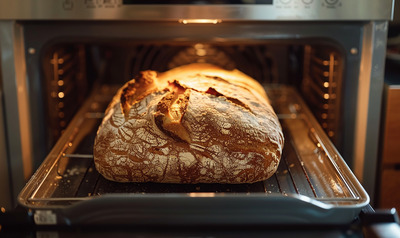
Recipe Variations
Sourdough date nut bread is a versatile recipe that can be easily customized to suit your taste preferences or dietary needs. By tweaking a few ingredients or adding different flavors, you can create a variety of delicious loaves, each with its unique twist. Below are some popular variations of sourdough date nut bread to try.
Cranberry Date Nut Bread
For a tangy twist on the classic, try adding dried cranberries to your sourdough date nut bread. The tartness of the cranberries contrasts beautifully with the sweetness of the dates, adding an extra layer of flavor.
- How to incorporate: Add 1/2 to 1 cup of dried cranberries to the dough along with the dates and nuts.
- Flavor profile: Cranberries bring a bright, tangy taste that enhances the rich sweetness of the dates and adds a pop of color to each slice.
- When to serve: This variation is perfect for the holiday season or festive gatherings. It pairs well with a cup of hot tea or coffee, making it an excellent choice for breakfast or an afternoon snack.
Spiced Date Nut Bread
If you enjoy warm, aromatic flavors, spicing up your sourdough date nut bread is a great option. By adding cinnamon, nutmeg, or cardamom to the dough, you can transform your loaf into a comforting, autumnal treat that is perfect for cozy days.
- Recommended spices: For a balanced spice mix, add 1-2 teaspoons of ground cinnamon, 1/2 teaspoon of nutmeg, and a pinch of cardamom to your dry ingredients.
- How it changes the bread: The spices add warmth and depth to the bread, making it feel richer and more fragrant. The combination of dates, nuts, and spices brings an irresistible flavor reminiscent of spiced holiday treats.
- Perfect for: Fall and winter months when you crave something warm and comforting. This variation also makes a great gift during the holiday season.
Pecan vs. Walnut: Which Nut to Use?
Both pecans and walnuts work beautifully in sourdough date nut bread, but each nut brings a slightly different flavor and texture to the loaf. Here’s how to choose between the two:
- Walnuts: Known for their robust, slightly bitter flavor, walnuts provide a strong, nutty taste that complements the tanginess of the sourdough. They also retain their crunch better than pecans after baking.
- Pecans: Sweeter and softer than walnuts, pecans offer a milder, buttery taste that blends well with the sweetness of the dates. They have a more delicate texture, making the bread slightly softer overall.
- Choosing between them: If you prefer a bread with a stronger, more pronounced nutty flavor, go with walnuts. If you want a sweeter, softer loaf, pecans are the better choice. You can also mix both for a combination of textures.
Whole Grain Sourdough Date Nut Bread
For those seeking a more nutritious and hearty loaf, substituting part of the white flour with whole grain flour like whole wheat or rye can add fiber and depth to the bread. This variation results in a denser, more rustic loaf that has a rich, earthy flavor.
- Substitution ratio: You can replace up to 50% of the white flour with whole grain flour. Whole wheat flour adds a nutty flavor, while rye flour imparts a slightly tangy taste that complements the sourdough starter.
- Benefits: Whole grains are rich in fiber, vitamins, and minerals, making this version of sourdough date nut bread more filling and nutritious. The denser texture also makes it more satisfying, perfect for those who prefer a heartier loaf.
- Best served with: This variation pairs wonderfully with savory spreads like cream cheese or nut butter. It also works well with soups or as a base for open-faced sandwiches.
Health Benefits of Dates, Nuts, and Sourdough

Sourdough date nut bread isn’t just a treat for your taste buds; it’s also packed with nutrients that make it a healthy choice. Let’s explore the health benefits of the key ingredients in this delicious loaf.
Why Dates are Nutrient Powerhouses
Dates are a fantastic source of natural sweetness and offer several health benefits:
- High in fiber: Dates support healthy digestion and prevent constipation.
- Rich in vitamins: They are a good source of potassium, magnesium, and vitamin B6, essential for overall health.
- Antioxidants: Dates are rich in antioxidants, which help fight inflammation and may reduce the risk of chronic diseases like heart disease and cancer.
Nutritional Benefits of Nuts (Walnuts or Pecans)
Nuts not only add flavor and texture to the bread but also provide significant health benefits:
- Walnuts: High in omega-3 fatty acids, walnuts help improve heart health and reduce inflammation.
- Pecans: Rich in healthy fats, fiber, and protein, pecans are great for supporting heart and brain health.
- Essential minerals: Both walnuts and pecans contain important minerals like magnesium and zinc, which contribute to bone health and immune function.
The Gut Health Benefits of Sourdough
Sourdough is known for its positive effects on digestion due to the fermentation process:
- Easier to digest: The natural fermentation process breaks down gluten, making sourdough easier to digest than traditional breads.
- Nutrient absorption: Fermentation increases the availability of nutrients like B vitamins, zinc, and magnesium.
- Gut health: The lactic acid bacteria in sourdough promote the growth of beneficial gut bacteria, supporting a healthy digestive system.
Frequently Asked Questions
When baking sourdough date nut bread, a few questions often arise. Below are answers to some of the most common FAQs, helping you troubleshoot any issues and improve your baking results.
How do I keep my sourdough date nut bread moist?
Maintaining the right moisture level is key to a soft, chewy loaf of sourdough date nut bread. Here are some tips to keep your bread from drying out:
- Proper hydration: Ensure your dough is well-hydrated. Sourdough dough should feel slightly sticky but manageable. If it feels too dry, you can increase the water content by a few tablespoons.
- Storage: After baking, let the bread cool completely, then wrap it in a clean towel or place it in an airtight container. This helps preserve moisture and prevents the bread from becoming stale. Avoid storing sourdough bread in the fridge, as it can dry out quickly.
- Freezing: If you want to store the bread for longer, slice it and freeze the slices in a sealed plastic bag. To enjoy later, simply thaw the slices at room temperature or toast them directly from the freezer.
Can I make sourdough date nut bread gluten-free?
Yes, it is possible to make sourdough date nut bread gluten-free by using alternative flours and a gluten-free sourdough starter. However, there are some important factors to consider:
- Gluten-free flours: Use a blend of gluten-free flours like rice flour, buckwheat flour, or a store-bought gluten-free flour mix. These flours provide structure without gluten but may result in a denser loaf.
- Sourdough starter: A gluten-free starter can be made with gluten-free flours, though it may take longer to develop the same level of activity as a traditional sourdough starter.
- Adjusting hydration: Gluten-free doughs tend to be stickier and require more water than traditional sourdoughs, so be prepared to adjust the hydration levels accordingly.
What’s the best way to toast nuts for this bread?
Toasting the nuts before adding them to the dough enhances their flavor and adds a crunchy texture to the bread. Here’s the best way to toast nuts:
- Preheat the oven: Set your oven to 350°F (175°C).
- Spread the nuts: Arrange the walnuts or pecans in a single layer on a baking sheet.
- Toast: Bake the nuts for 5-10 minutes, shaking the pan halfway through to ensure even toasting. The nuts are ready when they are fragrant and lightly browned.
- Cool before using: Let the nuts cool completely before incorporating them into the dough to prevent them from softening too much.
How long can I store sourdough date nut bread?
Sourdough date nut bread can be stored at room temperature for 2-3 days if kept properly. However, for longer storage, consider the following:
- Refrigeration: If you plan to keep the bread for up to a week, store it in an airtight container or bag in the refrigerator. Reheat slices in the oven or toaster to restore freshness.
- Freezing: For long-term storage, slice the bread and place the slices in a sealed freezer bag. It can be stored in the freezer for up to 3 months. Thaw slices at room temperature or pop them directly into the toaster for a quick snack.
Can I use sourdough discard in this recipe?
Yes, you can use sourdough discard to make this bread. Sourdough discard adds flavor but may not have the same leavening power as a fully active starter.
- Using discard: Replace the sourdough starter in the recipe with the same amount of discard. You may want to add a small amount of yeast to help with the rise since discard isn’t as strong as a freshly fed starter.
- Flavor impact: Using discard can give the bread a slightly milder sourdough flavor since it hasn’t been fed recently.

